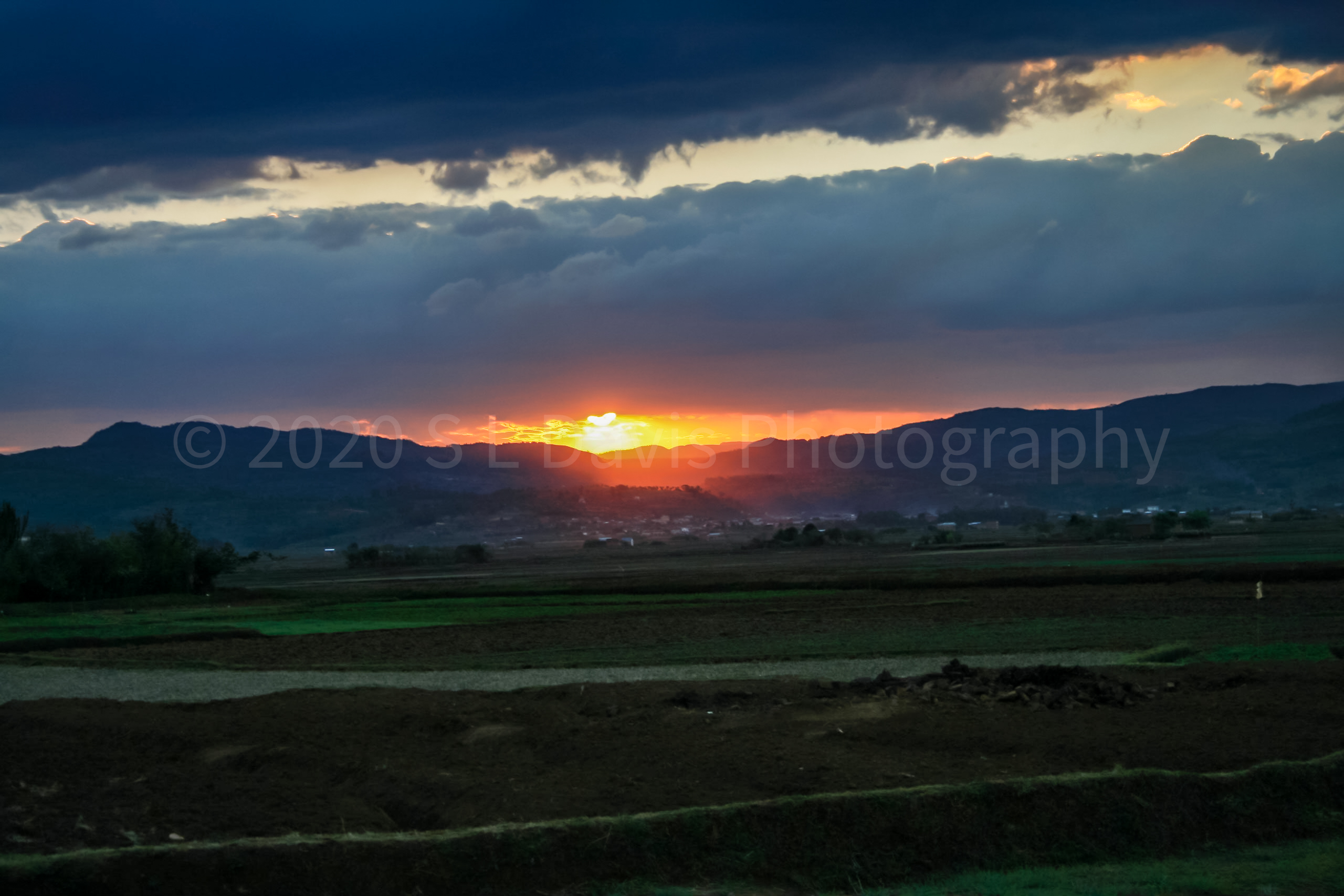
Showdown complete, I meet my new and improved guide Vula. Vula was incredibly understanding and equally appalled by what I had been put through. My final week in Madagascar meant my remaining itinerary was revised and tailored to my choosing.
As I’d missed out on Ampijoroa National Park, we changed the final week whereby, I’d spend a day recuperating in Antananarivo visiting the local zoo before we headed onto Ranomafana and then to a conservation centre. Unfortunately I couldn’t get a change of driver and he would quickly fall foul of two strong willed women.
The Botanical and Zoological Garden of Tsimbazaza is very peaceful and relaxing. Vula made every effort to ensure I could relax, she was incredibly informative and I can only say I wish she had been my local guide from the start.
One of the things that caught my fascination was the ring-tailed lemurs. I had interacted with ring-tails back in the UK at various zoos years before I’d made the decision to travel to Madagascar. Very much like the movie depiction of the ring-tailed lemur, this is the more commonly recognised species.
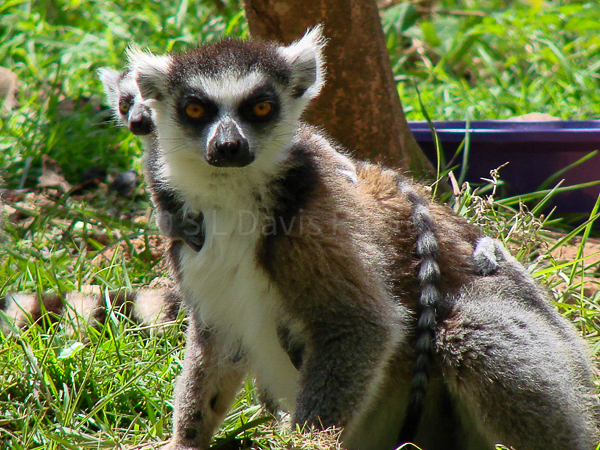
I say this, because of their distinctive features of the black and white rings around their eyes and tails. Truth be told, they’re endangered.
These lemurs are highly social, living in groups of up to 30 individuals. The female is the dominant, a trait common amongst lemurs and as you may have read in my blog on Africa, it is also a common trait in elephants. To keep warm and reaffirm social bonds, groups will huddle together. Something common in us humans or at least those of us who are huggers.
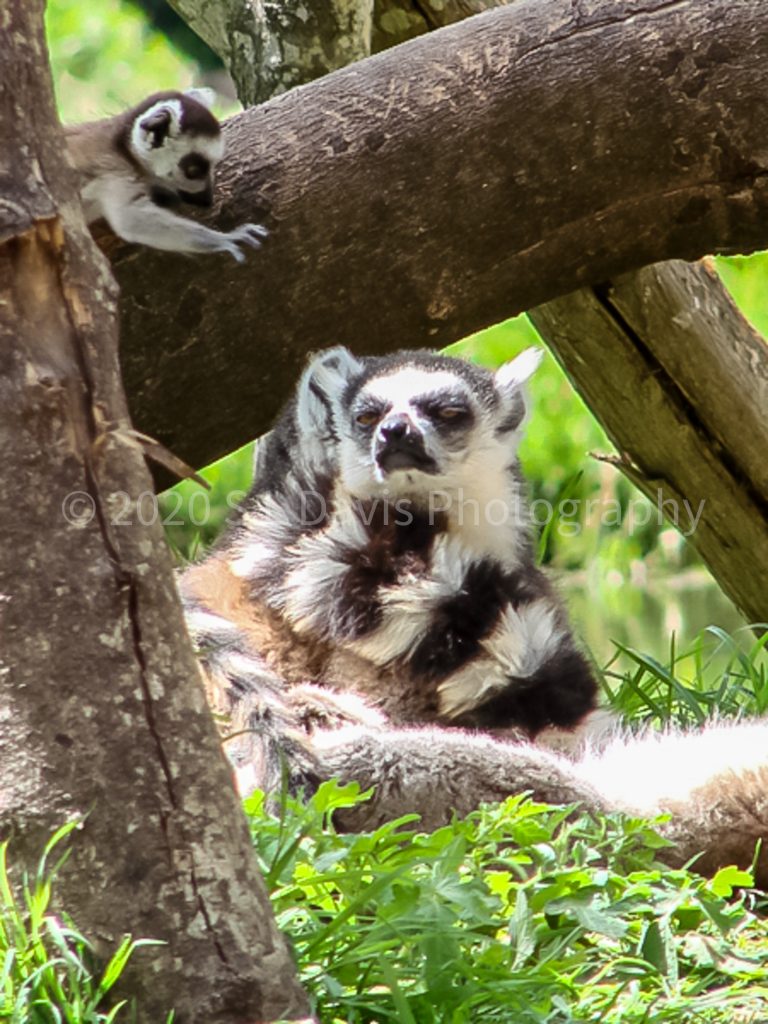
These lemurs like to sunbathe, sitting upright facing its underside, with its thinner white fur towards the sun. Like other lemurs, this species relies strongly on its sense of smell and will marks its territory with scent glands. The males perform a unique scent marking known as spur marking and will participate in stink fights by impregnating their tail with their scent and wafting it at opponents. Can’t say this is any different to some male humans with interesting digestive gas amusements…
Ring-tailed lemurs are one of the most vocal primates, they use numerous vocalisations including group cohesion and alarm calls, similar to the video of the Indri Indri in my second blog of this trip.
Scientific data has shown that the ring-tailed lemur, despite the lack of a large brain, can organise sequences, understand basic arithmetic operations and preferentially select tools based on functional qualities. Possibly smarter than a lot of humans if you think about it.
Despite the ring-tailed reproducing readily in captivity and being the most common lemur found in zoos worldwide, numbering more than 2,000 individuals, the ring-tailed lemur is listed as endangered by the IUCN Red List due to habitat destruction and hunting for bushmeat and the exotic pet trade. As of 2017, the population of ring-tailed lemurs in the wild is believed to have crashed to as low as 2,000 individuals, making them far more critically endangered.
As you can see from my own documented photography, these lemurs are incredibly family orientated and like any parents, they have unruly and mischievous young.
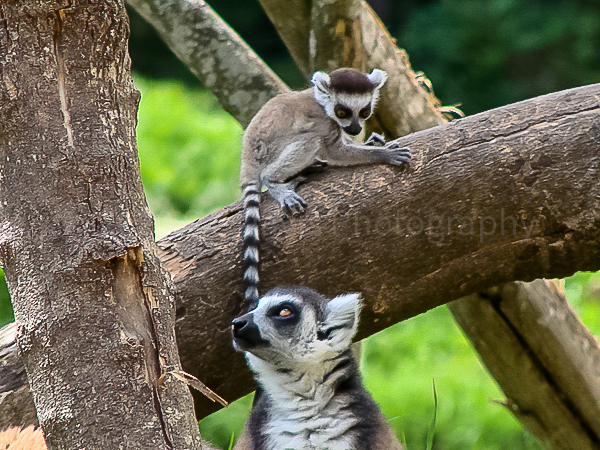
I had another tour of the Prime Minister’s Palace and there was a little more history on Madagascar but more on Queen Ranavalona I, who was sovereign of the Kingdom of Madagascar from 1828 to 1861.
Ramavo was born in 1788 in Madagascar, the Queen came from humble origins as a commoner’s daughter. Her father learned of a plot to murder the future king, Andrianampoinimerina, he informed his master and the plot was foiled. As a reward for saving his life, Andrianampoinimerina adopted Ramavo as his own daughter and he arranged for her to marry his son, Radama, she became the first of his twelve wives.
As in many cultures, the need to create “an heir and a spare” was very much in place in order to secure the line of succession. However, King Radama and Ranavalona never produced any children. This became rather problematic when the King died following a bout of syphilis.
In the 33-years Ranavalona reigned it is said that discipline under Ranavalona was brutal. If someone was suspected of being untrustworthy, one of the interesting punishments was they were forced to eat three chicken skins followed by the nut of a plant that made them throw up. This discipline meant they had to vomit all three chicken skins in order to prove themselves faithful. It is said that one of Ranavalona’s lovers—whom she had caught in a compromising position with another woman—refused to do this and was promptly speared in the neck. I guess she decided he really was quite literally a pain in the neck.
Ranavalona forbade the practice of Christianity within her kingdom; she wanted nothing to do with the teaching of Christianity, baptisms, or Sunday services. In 1835, she said that she would not deny foreigners their freedom of religion, but it was not to be taught to her people, and “whoever breaks the laws of my kingdom will be put to death—whoever he may be.”
Many foreign Christians fled, leaving their converts to face fines, imprisonment, torture, and execution. At one point, Ranavalona ordered that fifteen Christian leaders dangle by ropes over a rocky ravine. Their ropes were then cut, sending them to meet their untimely end. A few thousand people were thought to have been persecuted for religious reasons under Ranavalona’s rule.
Ranavalona is portrayed as a brutish tyrant, her own people grew somewhat wary themselves, particularly as Ranavalona’s behaviour became more and more erratic. An example of the queens conduct is, in 1845 she demanded that the entire court—along with a huge number of servants and slaves—go on a buffalo hunt. Approximately 50,000 people set off to hunt buffalo. They carried few supplies and had to build a road as they went along as per Ranavalona’s orders. As you can imagine, being this ill prepared meant many died from hunger and exhaustion, and it’s thought that around 10,000 people died during the 4-month-long hunt whereby no buffalo were killed.
When you look up Ranavalona, she is known as the “Mad” queen. The reality is Ranavalona was actually a good politician and leader. She was passionate and did her best to retain her country’s cultural heritage. She defended it against more powerful foreign nations who desired to take advantage of the island’s resources, and she expanded her territory to cover nearly the entirety of Madagascar. Unfortunately, the death toll associated with Ranavalona did not end upon her death. At her funeral, a barrel of gunpowder was accidentally ignited and the resulting explosion killed several funeral attendees. I think it is fair to say that the Queen quite literally went out with a bang and not alone either…
After lunch I was back on the road, off to Ranomafana 5 hours later and yet again I am involved in another near miss head on collision in the dark with a coach this time!
Vula begins yelling at the very same driver for being completely reckless as he had continued to drive as if he was on a formula one race track and totally disregarding the blind bends and ignoring our requests to slow down. Arriving in almost one piece, I hike 30 metres up a steep incline with a 20kg backpack to my room for a rest. The next morning I planned an early exploration on my own before I entered the national park the following day.
Waking the next morning, I had this spectacular view of the misty valleys of Ranomafana and I was ready to explore the local area and the rainforest. I head off around the local area after breakfast which consisted of more crepes.
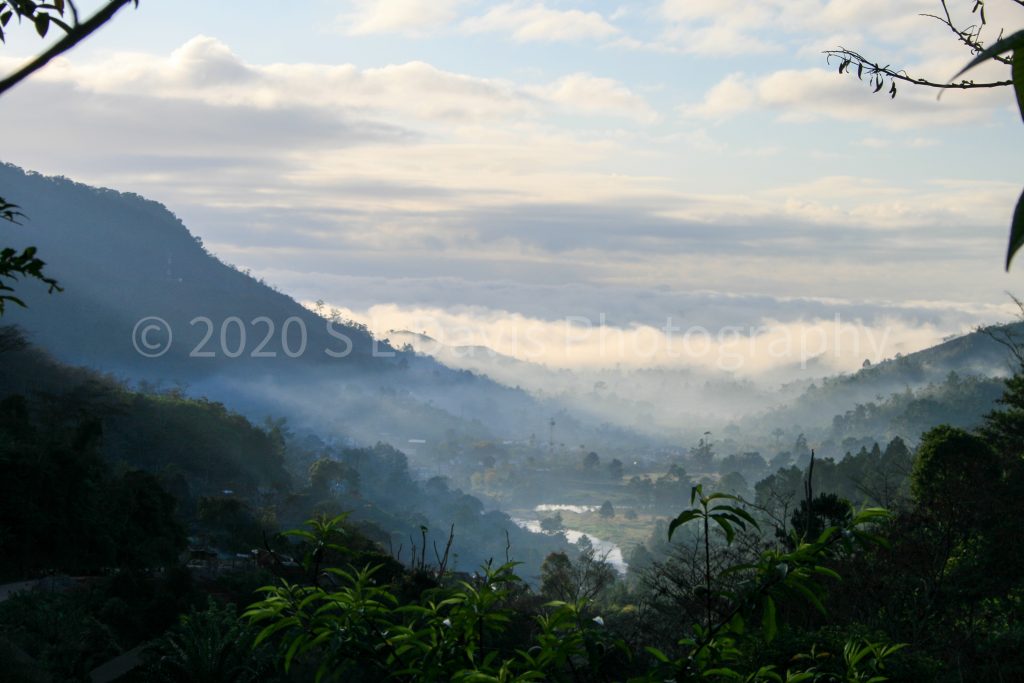
What I photographed, is a variety insects and all I can say is identification of the species is a challenge and I cannot guarantee I have been able to get all right as it is highly likely some simply do not have names and may no longer exist due to habitat loss.

Still unidentified 
Still unidentified 
Aphaenogaster 
Still unidentified 
Still unidentified 
Still unidentified

Unidentified moth 
Sunbird
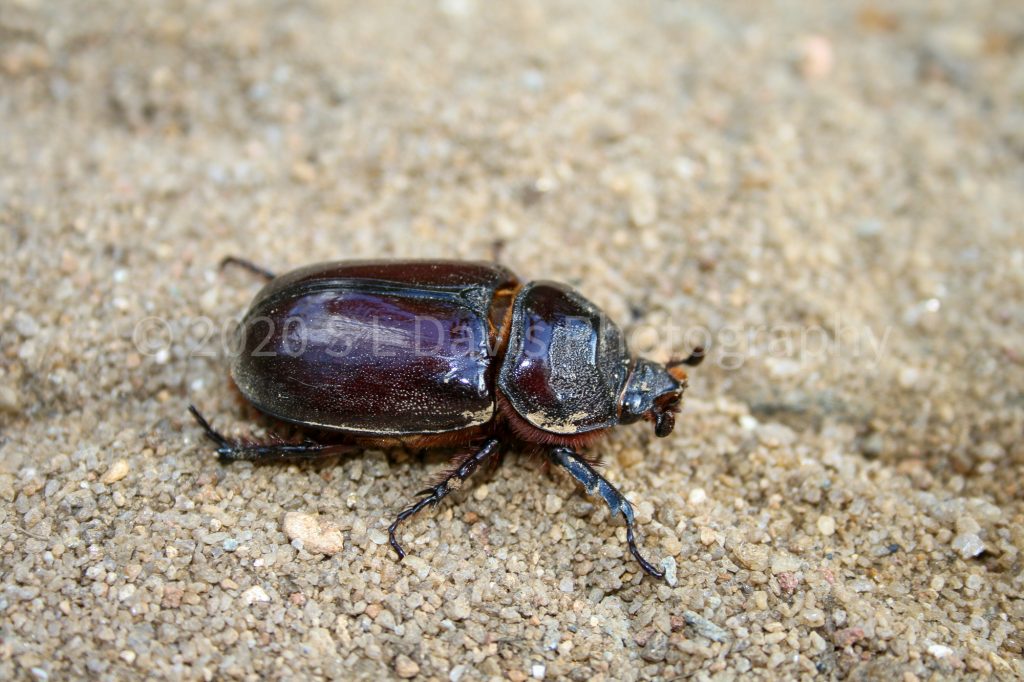
Ranomafana is green and rocky, it has deep rugged valley landscapes and it is humid. The name Ranomafana is Malagasy for warm water. The name of the place relates to the numerous hot springs in the vicinity of the national park which make this place truly special as it has a high level of biodiversity and is known for its cloud forest. Covering a mountainous area of 415 kilometres, the park is set at altitudes that range between 800 and 1,200 metres in a vast tract, comprised mainly of dense rainforest.
The Namorona River runs through the park and is also home to the Andriamamovoka falls. The National Park’s success is known to have come from one woman’s vision and dedication to preserve the nature and wildlife.
Dr. Patricia Wright is considered to be one of the world’s foremost experts on lemurs, Wright is best known for her 26-year study of social and family interactions of wild lemurs in Ranomafana National Park, Madagascar.
More is known about lemurs, than any other species in Madagascar and even now, there are still new species of lemur being discovered but as also classed as endangered. The most recent discovery was July 2020 whereby scientists have discovered and described a new species of mouse lemur. The new species is one of the smallest primates in the world…
The new species has been identified and named as Jonah rat lemur (Microcebus jonahi) in honour of the primatologist and conservation biologist Malagasy Prof. Jonah Ratsimbazafy. It is a total length from nose to tail of about 26 centimetres and weighs about 60 grams. They are incredibly shy animals that inhabit a small region in the tropical forests of the lowlands of northeastern Madagascar. Intense and increasing deforestation and loss of habitat, means the discovery of new species in places with a biodiversity as rich as Madagascar provides an important warning of how unique species may be very close to extinction.
Since Madagascar’s 2009 coup d’état, the area around Ranomafana National Park has faced serious threats from illegal gold miners, armed cattle rustlers, and bandits that have made it increasingly difficult to operate parts of the park. A town called Bevoahazo sits on the edge of Ranomafana National Park which is teeming with endangered and endemic species. Security in the area has been deteriorating over the last few years but things have escalated recently. In June 2018 the local police chief, Heritiana Emilson Rambeloson, who had gone to the area with a small team to investigate a bandit attack, was subsequently shot dead. This has raised concerns about safety not just for the locals in the area but that of the endangered species…
In my next instalment, I cover some of the diverse species of the national park and attempt to name those too..
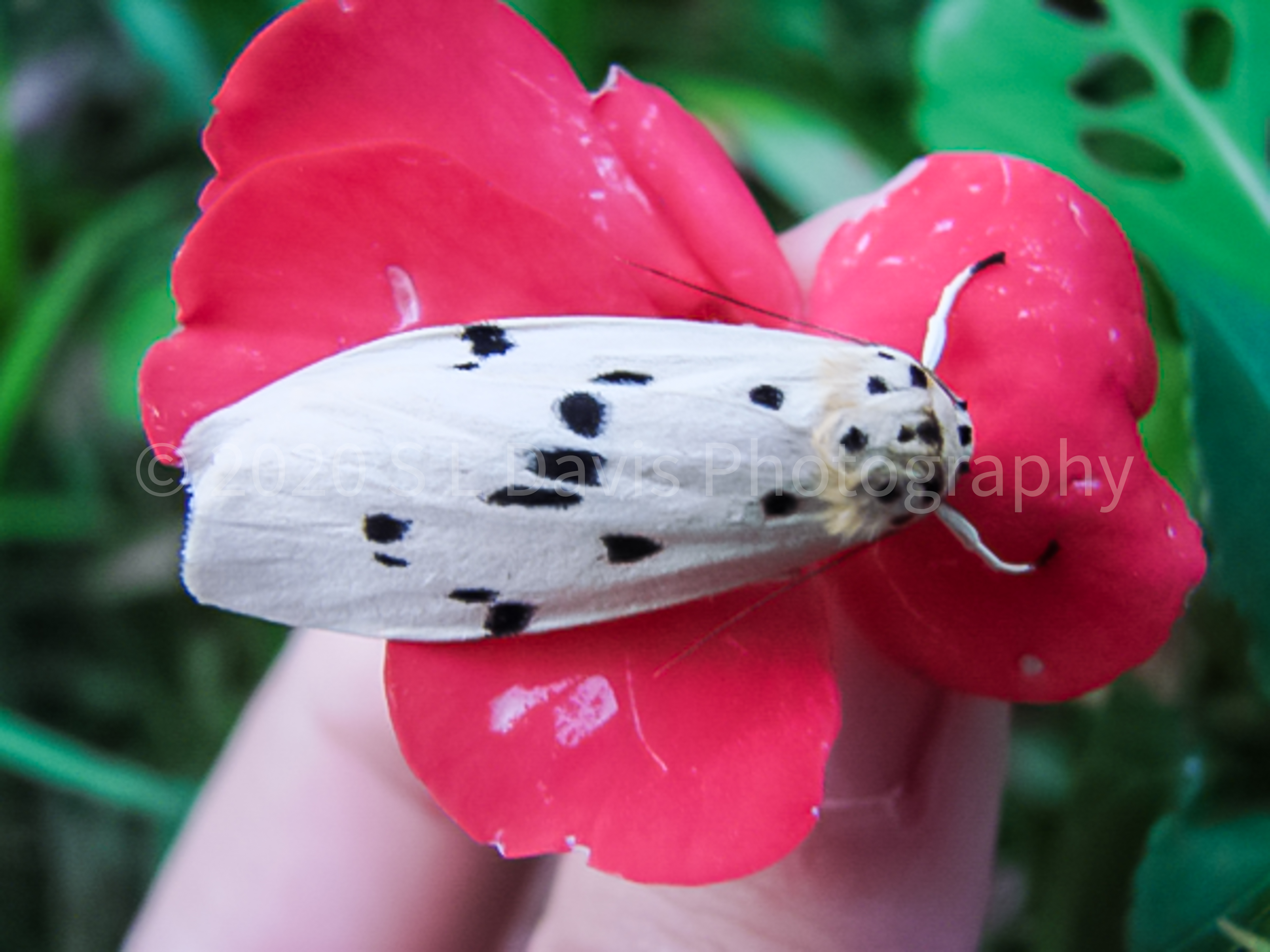







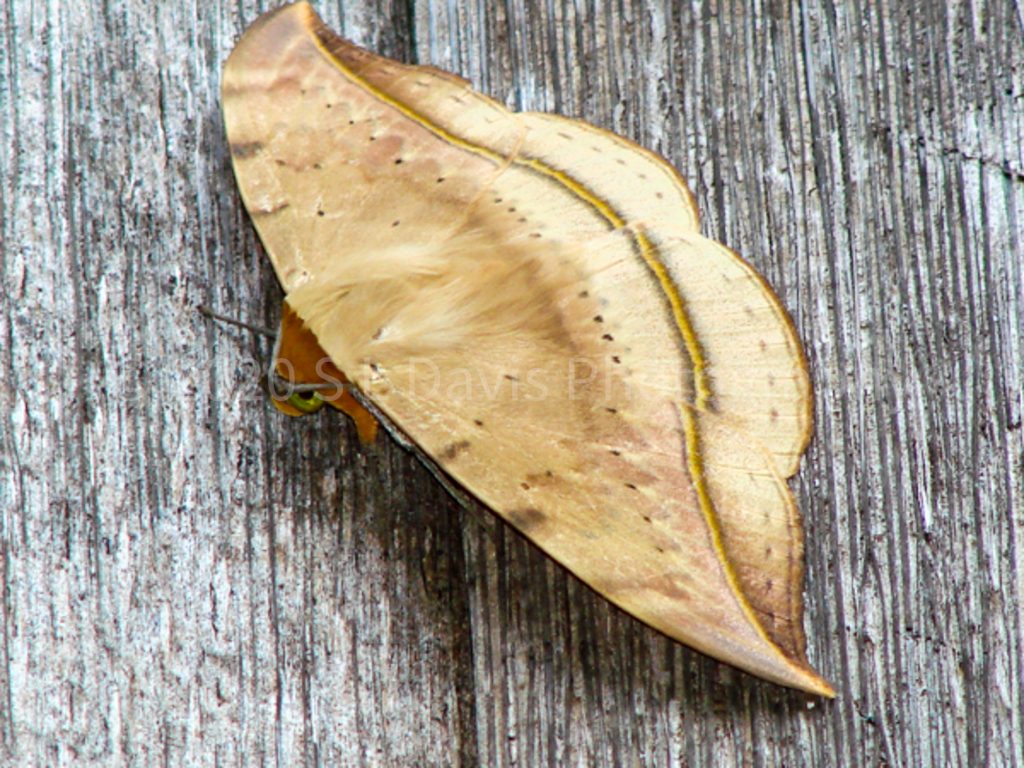

“Can’t say this is any different to some male humans with interesting digestive gas amusements… ” good one haha😄
An interesing read. Very informative xx